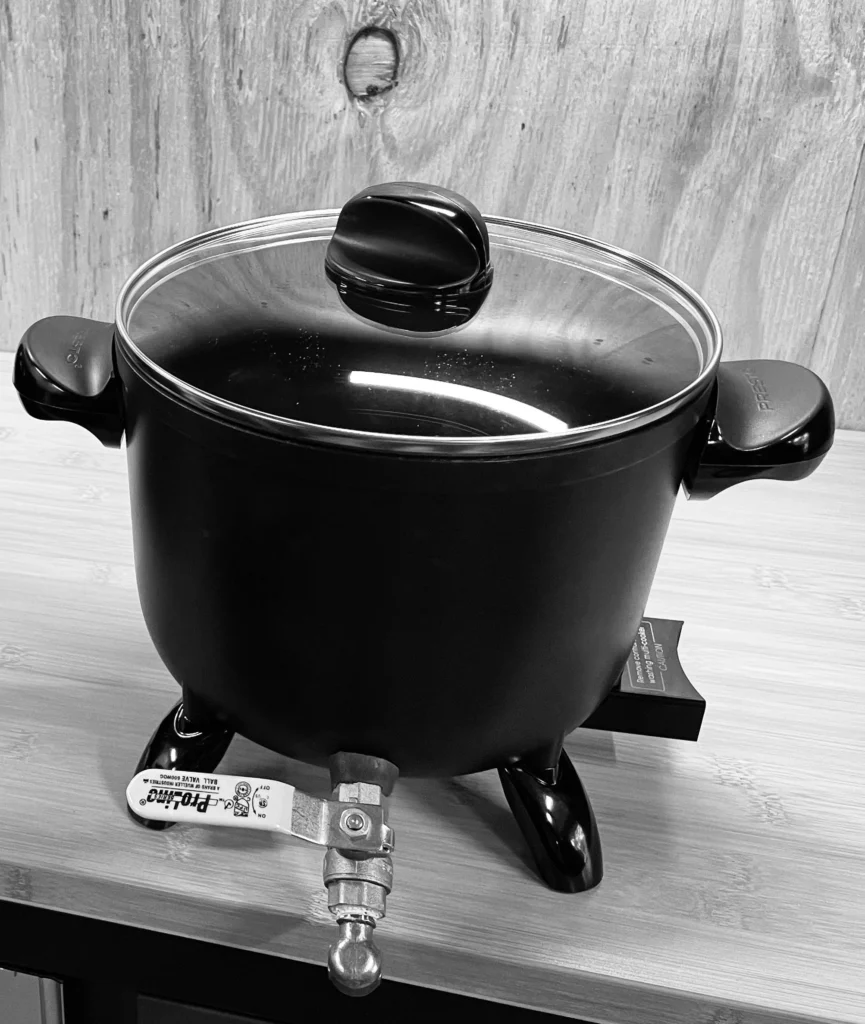In the realm of candle making, efficiency and precision are paramount. Enter the wax melter – a revolutionary tool that has transformed the way candles are crafted. In this comprehensive guide, we delve into the world of wax melters, exploring their functionality, benefits, types, usage tips, and more. Whether you’re a seasoned candle maker or a budding artisan, understanding the ins and outs of wax melters is essential for elevating your craft to new heights.
Understanding Wax Melters
Before we delve into the intricacies of wax melters, let’s first establish what they are and how they work. A wax melter, also known as a wax heater or wax melting pot, is a specialized device designed to melt wax efficiently and safely. It consists of a heating element, a melting pot or reservoir, temperature controls, and safety features.
The Benefits of Wax Melters
Wax melters offer a myriad of benefits that make them indispensable tools for candle makers:
Efficiency: Wax melters melt wax quickly and evenly, allowing for a streamlined candle-making process.
Precision: With precise temperature controls, wax melters ensure that the wax is heated to the optimal temperature for pouring, resulting in high-quality candles.
Versatility: Wax melters can accommodate various types of wax, including soy wax, beeswax, paraffin wax, and more, making them suitable for a wide range of candle-making projects.
Safety: Many wax melters are equipped with safety features such as automatic shut-off mechanisms and temperature sensors, reducing the risk of accidents.
Cost-effectiveness: By eliminating the need for traditional double boilers or stovetop melting methods, wax melters help save time, energy, and resources in the long run.
Types of Wax Melters
Wax melter come in a variety of shapes, sizes, and configurations to suit different needs and preferences. Some common types include:
Electric Wax Melters: These wax melter are powered by electricity and typically feature built-in heating elements and temperature controls. They are ideal for indoor use and offer precise temperature regulation.
Manual Wax Melters: Also known as stovetop wax melter, manual wax melter require direct heat from a stove or hot plate to melt the wax. While they are more traditional in design, they offer flexibility and are often more affordable.
Commercial Wax Melters: Designed for high-volume production, commercial wax melter are larger in size and capacity, allowing candle makers to melt large quantities of wax efficiently. They are commonly used in candle-making businesses and industrial settings.
Choosing the Right Wax Melter
When selecting a wax melter, several factors should be considered:
Capacity: Determine the volume of wax you intend to melt at once and choose a wax melter with an appropriate capacity to accommodate your needs.
Temperature Control: Look for wax melter with precise temperature controls to ensure that the wax is heated to the optimal temperature for pouring.
Safety Features: Prioritize wax melter with built-in safety features such as automatic shut-off mechanisms and temperature sensors to prevent accidents.
Durability: Invest in a high-quality wax melter made from durable materials that can withstand frequent use and provide long-lasting performance.
Ease of Cleaning: Opt for wax melter with removable melting pots or easy-to-clean surfaces for hassle-free maintenance.
Tips for Using Wax Melters
To maximize the performance of your wax melter and achieve the best results, consider the following tips:
Preheat the Melter: Allow the wax melter to preheat before adding the wax to ensure even melting and prevent temperature fluctuations.
Monitor the Temperature: Regularly monitor the temperature of the melted wax to avoid overheating, which can lead to discoloration or degradation of the wax.
Stir the Wax: Stir the melted wax occasionally to promote uniform heating and prevent the formation of air bubbles.
Use Caution When Handling Hot Wax: Exercise caution when pouring hot wax to avoid burns or spills. Wear protective gloves and use a pouring pitcher or ladle for precision.
Clean the Melter Regularly: Clean the wax melter thoroughly after each use to remove any residue or buildup and maintain optimal performance.
Conclusion
Wax melter are invaluable tools for candle makers seeking efficiency, precision, and quality in their craft. By understanding the functionality, benefits, types, and usage tips of wax melter, artisans can elevate their candle-making endeavors to new heights. Whether you’re a hobbyist or a professional, incorporating a wax melter into your workflow can revolutionize the way you create candles, making the process more streamlined, enjoyable, and rewarding.







